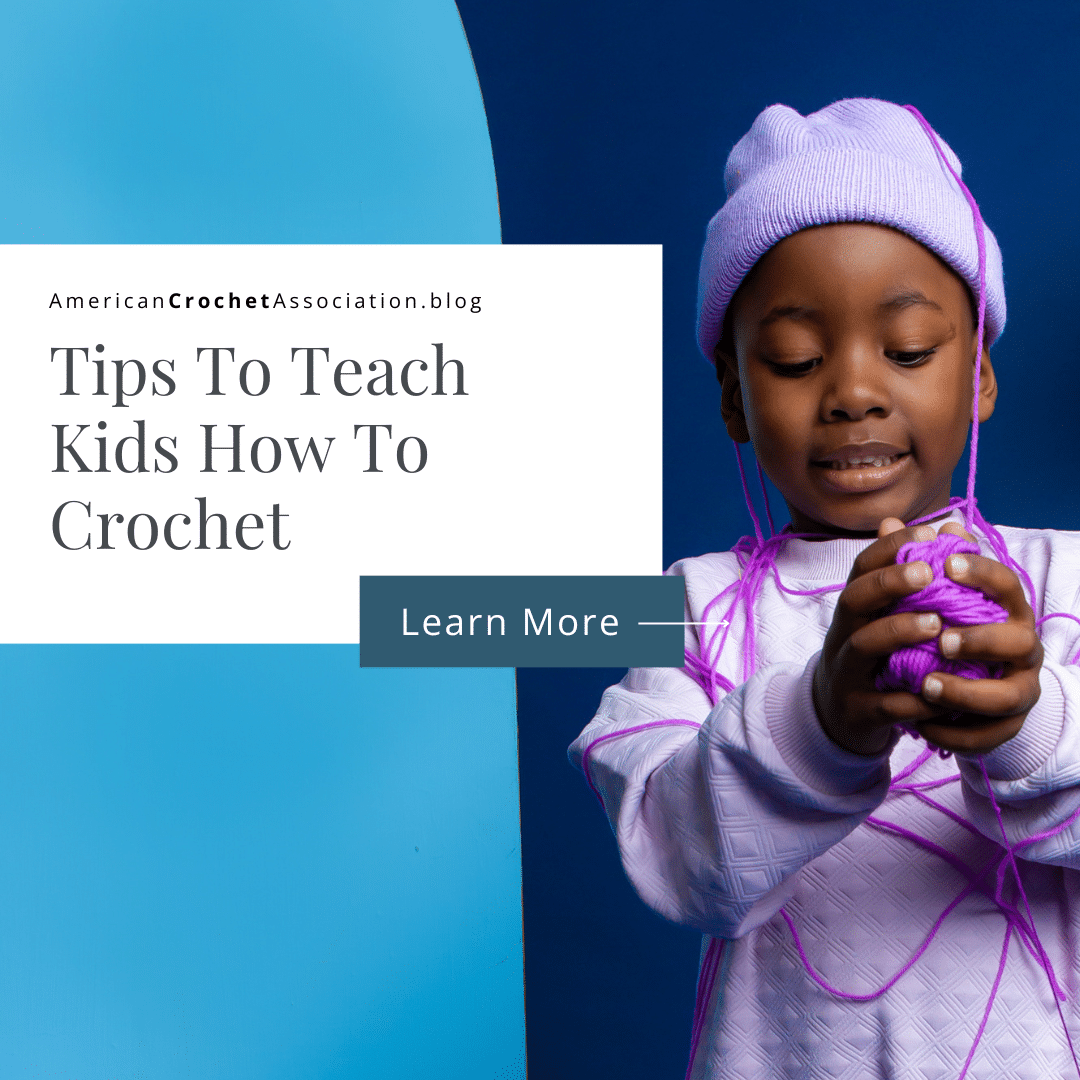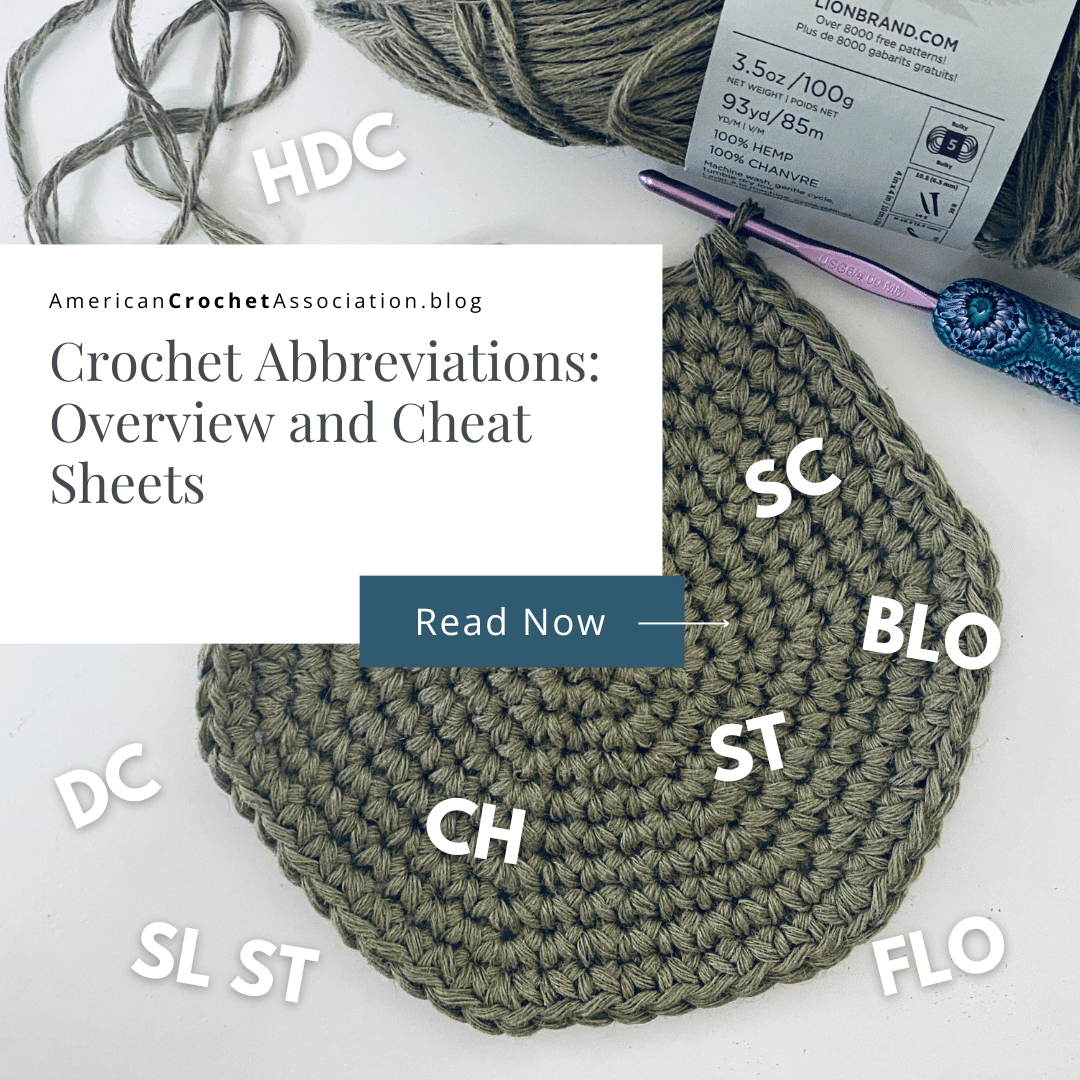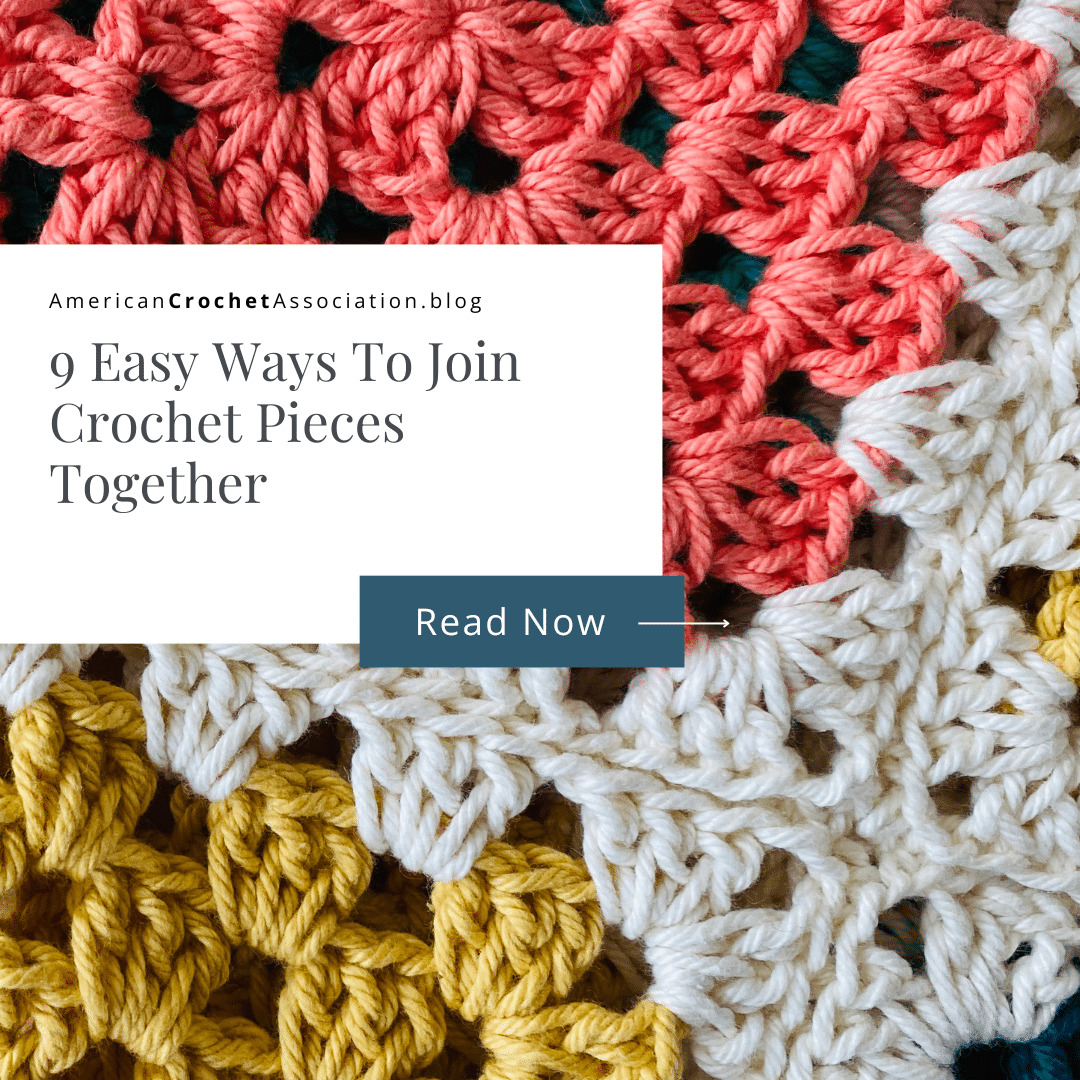Whether you’ve been crocheting for a few months, or a few decades, you’ve probably offered to teach at least one person how to crochet.
And that’s fantastic – long live crochet!
Crocheters not only love their craft, they love sharing their craft with others.
Hooray crochet people!
While you may already know how to crochet like a pro, knowing how to teach crochet can be really tough because doing and teaching are very different things.
Have you learned this lesson the hard way yet?
There really is a big difference between knowing how to crochet and being able to pass that knowledge along so that someone else can learn from you.
After teaching professionally since 2009, and launching the Crochet Instructor Training Program with the American Crochet Association, I found that there are a few key things that help crocheters become successful teachers.
If you want to learn how to teach crochet, here are some of my best tips and practices to help!
Table of contents
Estimated reading time: 11 minutes

Mistakes Crochet Teachers Make
Groups Are Not For Beginners
Here’s a scenario that might sound familiar to crocheters:
You love crochet, and it is something you really enjoy doing – You’re good at it!
And then, someone wants to learn how to crochet, and they ask you to teach them – Awesome!
So you invite people (one, two, three… heck, however many want to join in and learn) to meet up and crochet – Exciting!
You tell everyone they can bring their own yarn and supplies, and you’ll handle the rest!
In fact, why not turn this into something fun; cue the wine, nibbles, music… yep, that sounds like a party!
And then, an hour into this “crochet lesson”, you’re walking around in circles:
- giving specific guidance about the next steps in that half-finished project someone brought.
- teaching someone from scratch what a slip knot is and how to work it.
- looking at that long “scarf” someone learned to crochet from a friend or family member when they were a child, and they aren’t quite sure why the sides aren’t straight…
- And, you haven’t even gotten to that one person who came to learn, but is still patiently waiting for their turn with you.
Why This Is A Mistake
While this might be a fun social gathering for some, and offer a few crochet tips for others, it is definitely not a productive environment for beginners to learn how to crochet.
While one or two people from this scenario may continue past an initial gathering like this, the majority will give up and assume that crochet is just too hard.
This type of scenario will make some people feel that crochet is not for them, because they tried that one time and just couldn’t get it.
This isn’t fair for you as a teacher, and it is not fair for beginners who want to learn how to crochet.
Now, we’ve all been in situations like this; either as a teacher, or as someone looking to learn.
But if you really think about everyone involved, I hope we can all finally agree that social groups are not environments for beginners to really learn how to crochet.
Right?
And, even if you argue that it can work for a select few (because you have that one friend who learned that one time…), maybe, just maybe, groups are not an effective teaching strategy for everyone.
I’m not saying you should stop partying with people who want to crochet (how awesome is that!!!), but again, groups really are not an environment to give quality crochet lessons to beginners.
Specific Projects Are Not For Beginners
Here’s another scenario that you might think is a good idea:
Someone found something on the internet, either on social media or Pinterest, and now they want to learn how to crochet so they can make that thing.
This happens a few times a year, especially when something circles the internet because it is being shared thousands of time (mermaid tail blankets, granny squares, amigurumi).
After all, granny squares are probably the thing you made when you learned to crochet, so they must be great for beginners – right?
And, amigurumi are so tiny, you’ll be able to whip one up in no time – right?
Blankets? What a breeze! You’ll just do this one stitch, or this one repeat, over and over again until you have the size you want!
Before I began teaching professionally, these are all real-life scenarios and projects I used in beginner crochet lessons.
And, every single one of these projects, and scenarios, created really frustrating experiences for everyone involved.
Some people learned some things, but lessons were long, exhausting, and left far more questions then answers.
While you may know how to crochet nearly anything, and you can confidently find resources and figure pattern instructions out, you have the benefit of basic crochet knowledge and skill to do so.
Beginners don’t have that yet, and allowing them to choose a “fun” project to learn crochet will most often backfire.
Let me explain…
Why This Is A Mistake
Granny squares are worked from the center out in joined rounds, are written using complex stitch repeats, and use multiple basic stitches at a time.
And so, using a granny square as the first lesson for a beginner will look like this:
- Yarn and hook choice for the project, and why
- How to read and follow a pattern with intricate acronyms, terms, and repeat symbols
- How to hold yarn and hook together
- How to work an adjustable loop, or chain a loop, and the difference for each
- How to work into an adjustable loop, or chain loop
- How to start a round with chains, what counts as a stitch and what does not
- How to double crochet
- How to chain
- Right and wrong sides of stitches and fabric
- How to join a round
- How to start a new round
While each one of these objectives are essential crochet lessons, there is not enough time to focus on basic crochet knowledge, skill, or technique.
As an analogy, if someone wanted to learn how to cook, who has never been in a kitchen before, or knows the difference between a knife and a spatula, would their first cooking lesson be a full thanksgiving dinner spread?
I hope not.
Teaching a beginner how to crochet with a granny square, amigurumi, blanket or sweater will offer an overwhelming amount of brand new information with complex detail.
And, even if you think you can cram a lot of valuable lessons into one crochet project for beginners, lots of basic crochet skills can be completely left out, like:
- Focusing on comfortable ways to hold yarn and hook together
- Yarn weights, fibers, textures, colors
- Working, identifying, and counting basic crochet stitches in rows: Chain, Single, Half Double
- Working in rows
- Working in tubes
- Working in joined rounds
- Working in continuous rounds
- Working simple stitch repeats
- Working complex repeats
- Changing color
- Fastening off
- Adding new yarn
And so much more.
How To Teach Crochet To Beginners
What is a crochet teacher?
You might be a crochet expert (maybe you really can crochet all the things), but are you really a crochet teacher?
That might be more tricky, even if everything you crochet is at an expert level.
When we look at the definition of a teacher, the qualities are outlined as:
Sharing with another person to facilitate their understanding and use of knowledge, concepts and processes within a particular subject.
In short, teachers help students become aware and involved in the knowledge and application of a subject.
As a crochet teacher, every lesson you give should:
- outline specific learning objectives
- offer projects that incorporate specific learning objectives
- show a specific progression of learning, from beginner, easy, and even intermediate skills.
So often, the reality of what a teacher is supposed to be is not fully realized until after a disastrous first “crochet lesson” or two.
Levels of Crochet Skill
While you might have heard terms like “advanced beginner” used in crochet, there are actually only 4 terms universally recognized with crochet skill levels.
And, your crochet skill level is entirely based on your crochet knowledge, and how well you can execute that knowledge into skill.
If you’re going to give crochet lessons, it is important to understand how each level of crochet skill is categorized so that you can offer effective learning objectives for students to progressively learn.
Get an outline for each of the levels of crochet skill today: What is your crochet skill level?
Crochet Is Hard
Crochet is a skill that requires a lot of energy and attention from the mind and the body.
When learning how to crochet, a student must work both hands together to loop a hook around yarn and create stitches and fabric.
This can be a really awkward process, and it takes a lot of time to practice until it is comfortable.
And so, as a teacher, crochet may be easy for you to do.
But remember, crochet actually takes a lot of time, patience, and practice to really grasp (pun intended).
If you want to learn how to teach crochet to beginners, whether you want to teach your kids, that one friend, or start a business, you can do it, and I have some tips that will help!
Top 3 Tips – How To Teach Crochet To Beginners
I’ve got three super simple tips that will help you (and your beginner student) have a successful crochet experience.
After teaching professionally since 2009, and launching the Crochet Instructor Training Program with the American Crochet Association, I found that there are a few key things that help crocheters become successful teachers.
You can learn more about that program (and grab the patterns in my Crochet Teacher Toolkit) right here: Crochet Teacher Toolkit
No matter your own skill level or expertise, these tips provide a happier and far more productive experience, helping you learn how to teach crochet!
Tip 1 – Give Private Lessons
Say this with me: group workshops are not settings for beginners to learn how to crochet.
Crochet can be a very tricky skill to learn, and it does require a lot of individual time and attention to begin.
When teaching beginner lessons, no more than 2 students per instructor is going to be the best approach.
There is a massive difference between beginner lessons (private instruction) and workshops (group settings).
So, be sure to give beginners personal time and attention to help each beginner student have a successful start!
Once a student learns the basics of crochet, and they are no longer a beginner, a group setting can be a great approach to teach them specific projects (like amigurumi and granny squares), techniques and skills.
Tip: A set of 2 friends can have a lot of fun taking crochet lessons together, especially when they practice together and keep each other accountable.
Tip 2 – Provide All The Materials
Say this with me: They are beginners, so they don’t know what they to have, or bring, to learn how to crochet!
Beginners don’t typically know a lot about yarn (weight, fiber, color, feel, texture…), so they may choose yarn that is pretty, but not very functional to learn how to crochet with.
As a crochet teacher, you must know that yarn is an important subject to discuss so that your crochet students can have confidence in the materials they are working with.
That’s why the first yarn weight to work with when teaching crochet should be:
- thick, like in the weight 5 category,
- sturdy, like having minimal plys or strands,
- easy to see, and lighter in color (like Heather Gray).
Use the suggested hook for the yarn you choose, and even try 1 size larger when they first begin.
The goal is to assure each crochet stitch your student works can be clearly seen, counted, and worked into.
Tip: provide enough yarn for your student to make a few practice swatches of basic crochet stitches, and at least 2 hook sizes (one that the yarn calls for, and another that’s 1 size larger).
Tip 3 – Teach Basic Crochet Stitches
Say this with me: Don’t start crochet lessons with a specific project.
People typically want to learn crochet because they saw something amazing on Pinterest.
That is great!
But, starting with a specific project when teaching someone how to crochet will be a huge mistake.
When you start with a specific project (whether it’s a blanket, granny square, stuffed animal… whatever), you’re often skipping over a lot of foundational elements that make the understanding of crochet possible.
The goal of teaching is to pass crochet on so that your student has the knowledge and skill to crochet at the beginner, easy, and intermediate levels without you.
And for that to happen, your crochet students need a firm understanding of crochet basics in each of those levels so that they can build on that knowledge.
And so, simply teaching basic crochet stitches before moving on to small projects is a great foundation to teach any aspect of crochet with greater ease, and understanding.
How To Teach Crochet – Resources
If you are looking for free online resources to help you learn how to teach crochet, here is a complete outline to help you get started: How to Crochet: A Step-By-Step Guide for Beginners
How to Crochet for Beginners is a step-by-step guide to learn the art of crochet, including crochet stitch tutorials, techniques, free crochet patterns to try, tips, and so much more!
Video Chat
For even more details on this topic, and to listen to an entire conversation outlining each of these tips to help you learn how to teach crochet, watch my chat right here:
Click Here to ask questions & further this conversation in our community!
Peace, Love & Crochet
Salena






